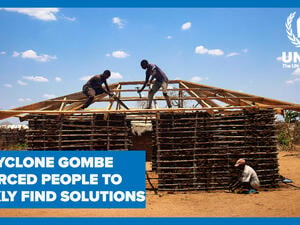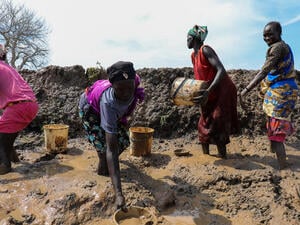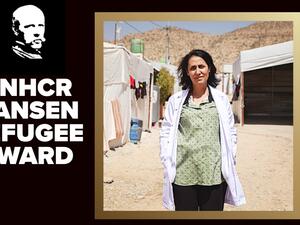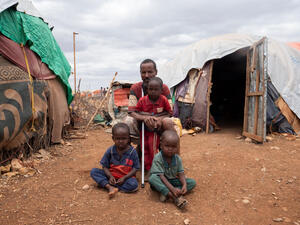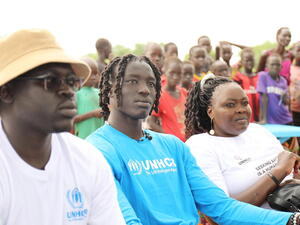Stepped up fighting displaces tens of thousands more Libyans
Stepped up fighting displaces tens of thousands more Libyans

Plumes of smoke rise in the sky after a rocket hit a fuel storage tank in Tripoli during heavy fighting between rival militias. The fighting this year has left almost 300,000 people displaced, including 100,000 in the past three weeks.
TUNIS, Tunisia, October 10 (UNHCR) - Fighting between rival armed groups in Libya has left almost 290,000 people forcibly displaced across the country, including 100,000 in the past three weeks alone, the UN refugee agency said on Friday.
The internally displaced, from 29 cities and towns, urgently need food, health care and other basic commodities as well as adequate shelter for the approaching winter. "UNHCR and its partners are responding to some of these needs, but we face major constraints in access," spokesman Adrian Edwards told journalists in Geneva.
The main area of recent displacement has been around Warshefana on the outskirts of Tripoli, where fighting has caused some 100,000 people to flee in the last three weeks. This, along with the Benina area outside the eastern city of Benghazi, is among the worst affected areas. Some 15,000 people are estimated to be displaced around Benghazi.
Most displaced people are living with local families who in some cases have opened their homes to several families at a time to meet the growing need for shelter. People unable to stay with relatives or host families sleep in schools, parks or non-residential buildings converted into emergency shelters.
"The growing number of displaced people is outstripping the capacities of local communities, from whom we are hearing increasing concern about the ability to cope," Edwards said.
An example of the increasing humanitarian needs and shrinking humanitarian space is the situation in the small town of Ajaylat, some 80 kilometres west of Tripoli. Ajaylat, a town normally of about 100,000 people, is hosting some 16,000 displaced people. With displaced people now making up more than 10 per cent of the local population, health facilities are struggling to cope.
The main hospital there reports a 30 per cent increase in cases and lacks essential medical supplies and medicines for chronic illnesses such as hypertension and diabetes. Other towns across western Libya and in Benghazi are under similar strain.
Efforts to assist the displaced are hampered by limited access for humanitarians to towns affected by fighting between rival armed groups. When security permits cross-border aid convoys are the only way to get supplies to people in need, as access to warehouses inside the country is often impossible.
UNHCR and International Medical Corps (IMC) despatched the first relief convoy for 12,000 displaced people in western Libya in August. In partnership with World Food Programme, who provided food items, UNHCR and IMC have also distributed additional non-food aid to 6,700 people in recent weeks. But additional help is needed, and for this better access is required.
The UN Support Mission in Libya has called for an immediate ceasefire and access to carry out further assessment missions and distribution of humanitarian aid. The UN has issued a humanitarian appeal for Libya requesting additional funding to continue helping hundreds of thousands of people affected by the crisis in the country.
As well as the impact on the local population, the fighting is also affecting refugees, asylum-seekers, and migrants in Libya - many of them from Middle Eastern countries and sub-Saharan Africa. The lawlessness and a recent doubling of food prices have made many desperate to leave.
Libya's policy of detaining refugees and migrants has pushed many to put their lives in the hands of smugglers to try to get to Europe - joining the tens of thousands of people who in recent months have transited through Libya and made the dangerous journey across the Mediterranean. Of the more than 165,000 who have arrived on Europe's shores so far this year, the majority departed from Libya - of whom 48 per cent are Syrians and Eritreans.
Many have not made it far from the Libyan coast. The latest tragedy, off the coast near Tripoli on October 2, left more than 100 people, mostly Syrian nationals, dead or missing. It highlights the need for new legal approaches.

